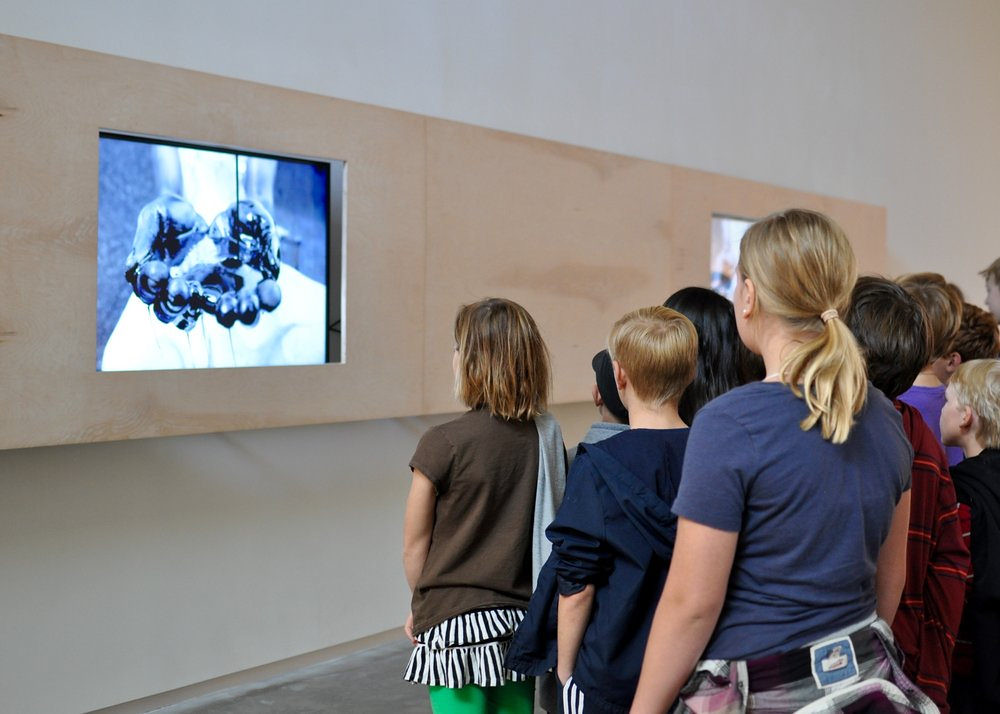The Role of Artwork in the Montessori Classroom
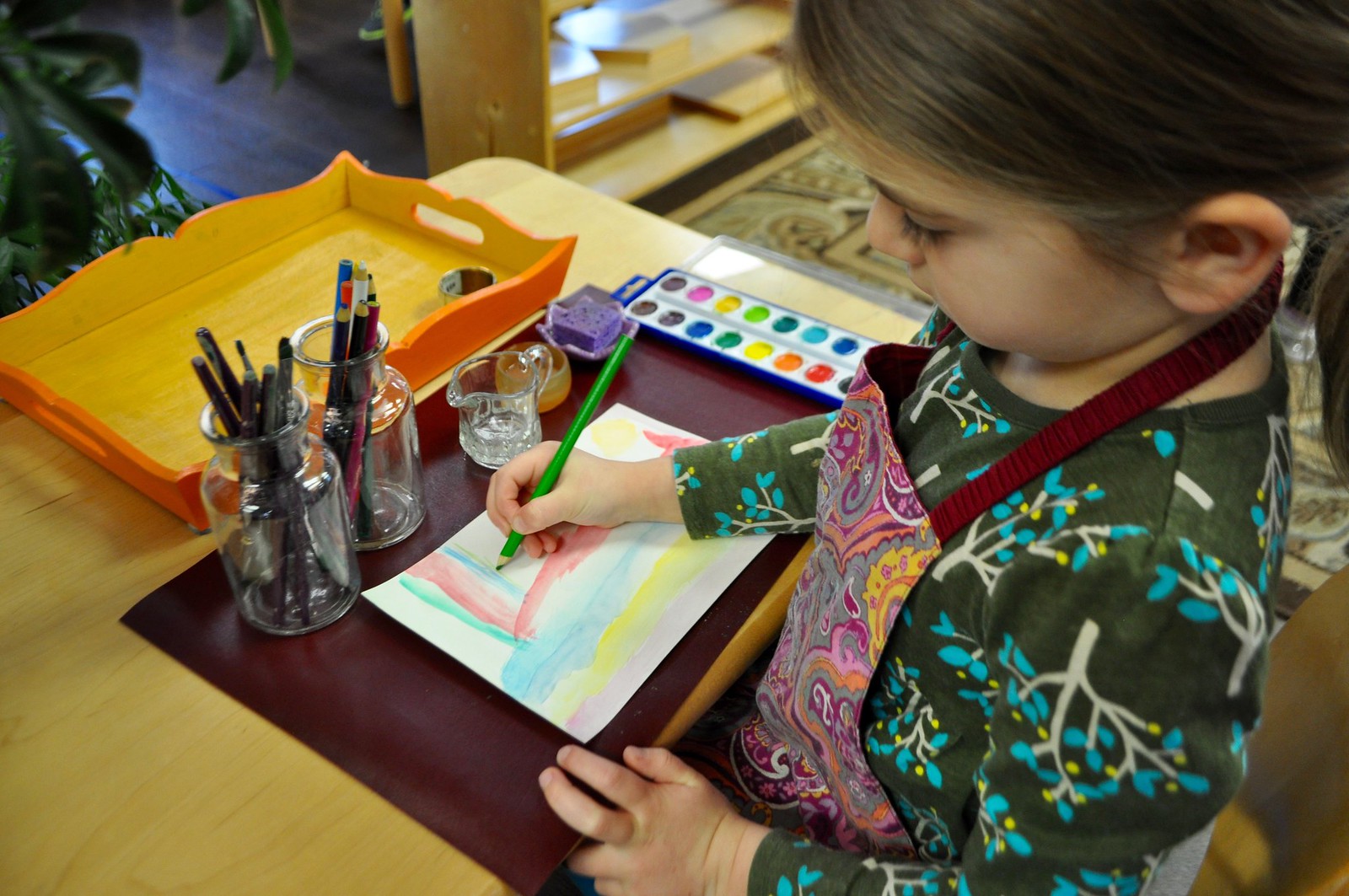 Artwork in the Montessori classroom serves many functions, from the Children's House all the way up through Upper Elementary! Get a glimpse into the role artwork plays at Villa di Maria below.
Artwork in the Montessori classroom serves many functions, from the Children's House all the way up through Upper Elementary! Get a glimpse into the role artwork plays at Villa di Maria below. 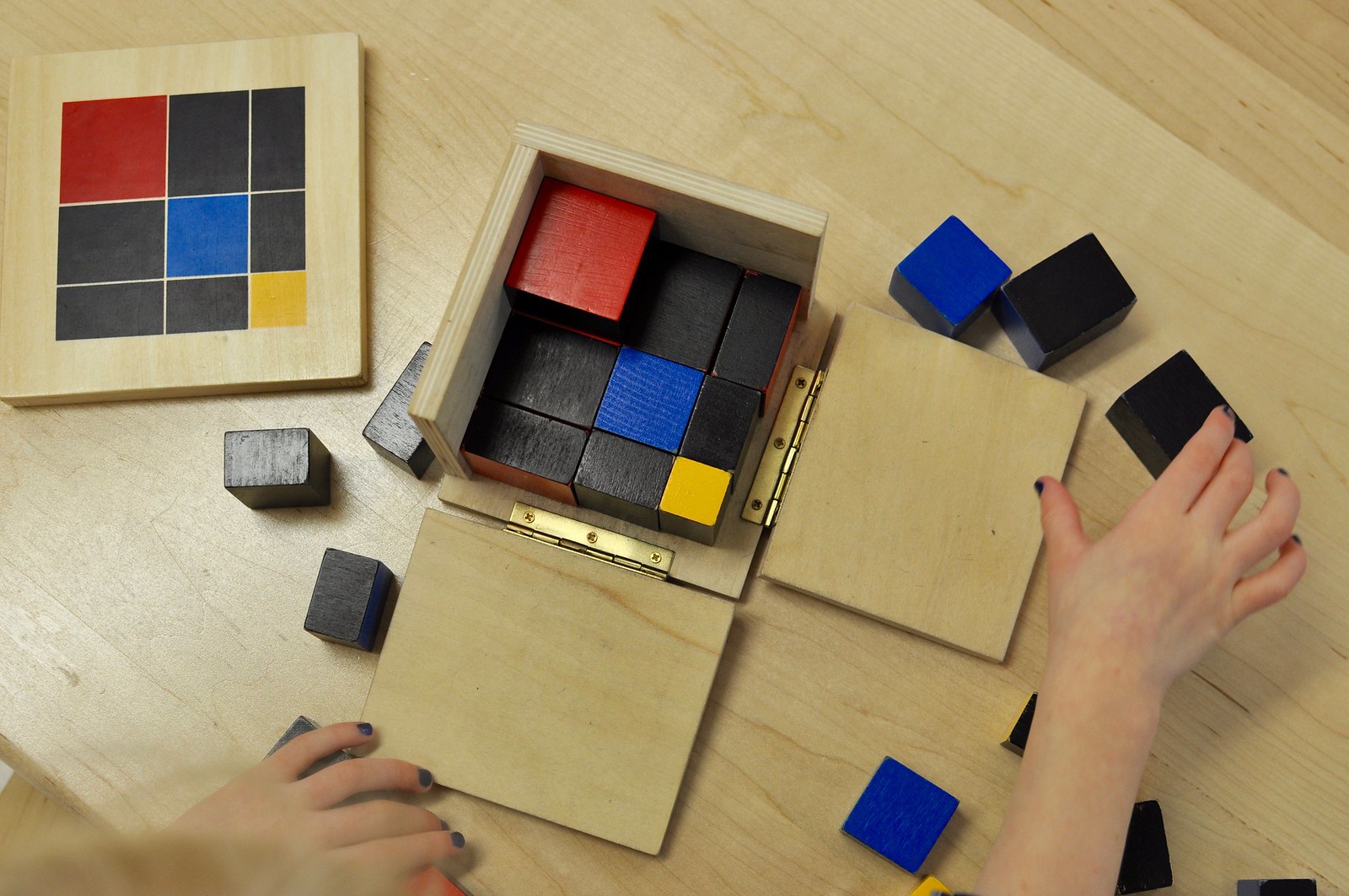 Art is everywhere in the Montessori classroom. In the Children's House, the materials themselves are reminiscent of famous works; note the similarities between the Trinomial Cube work (above) and Dutch painter Piet Mondrian’s abstract painting Composition II in Red, Blue, and Yellow (1930):
Art is everywhere in the Montessori classroom. In the Children's House, the materials themselves are reminiscent of famous works; note the similarities between the Trinomial Cube work (above) and Dutch painter Piet Mondrian’s abstract painting Composition II in Red, Blue, and Yellow (1930):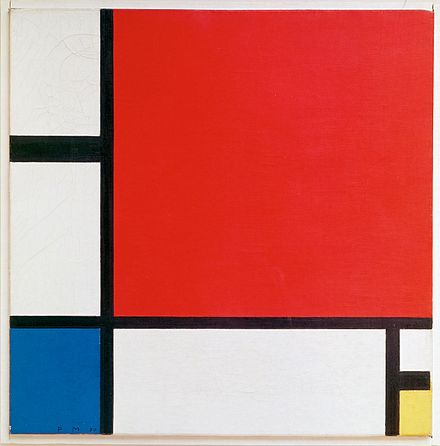 There are pictures of famous artworks hanging at children's eye level on the walls in every level of Montessori classroom here at Villa di Maria. Seeing and recognizing these works is considered part of the experience of appreciating and learning about arts and culture. In fact, Dr. Montessori encouraged parents and Guides to expose children to fine art from birth by hanging such works at eye level where a baby/toddler could clearly see them.
There are pictures of famous artworks hanging at children's eye level on the walls in every level of Montessori classroom here at Villa di Maria. Seeing and recognizing these works is considered part of the experience of appreciating and learning about arts and culture. In fact, Dr. Montessori encouraged parents and Guides to expose children to fine art from birth by hanging such works at eye level where a baby/toddler could clearly see them.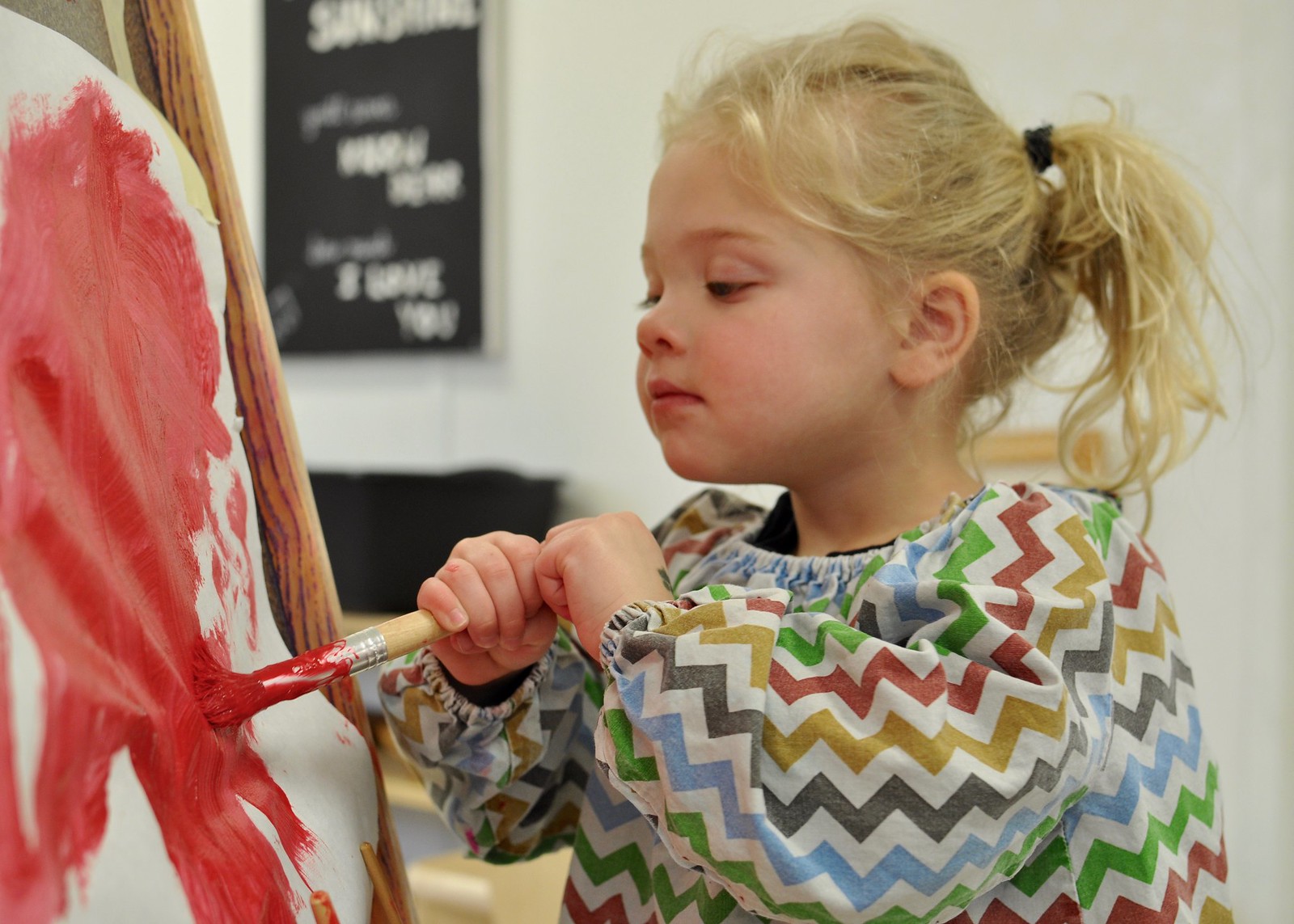 In the Children's House, art is very much tied with the typical Montessori goals: to help a child increase dexterity, concentration, fine motor skills, hand and finger strength, and coordination. The artwork here is more about the process than the resulting piece of art, and a child may feel no connection to the final piece of art. This is okay and very normal! The goal here is a child's focus, not a frame-worthy product (though we won't fault you if you do want to display the finished products), and the child may work at a faster, less careful pace, especially at first. After all, the child works not to develop a product, but to develop a self.
In the Children's House, art is very much tied with the typical Montessori goals: to help a child increase dexterity, concentration, fine motor skills, hand and finger strength, and coordination. The artwork here is more about the process than the resulting piece of art, and a child may feel no connection to the final piece of art. This is okay and very normal! The goal here is a child's focus, not a frame-worthy product (though we won't fault you if you do want to display the finished products), and the child may work at a faster, less careful pace, especially at first. After all, the child works not to develop a product, but to develop a self.
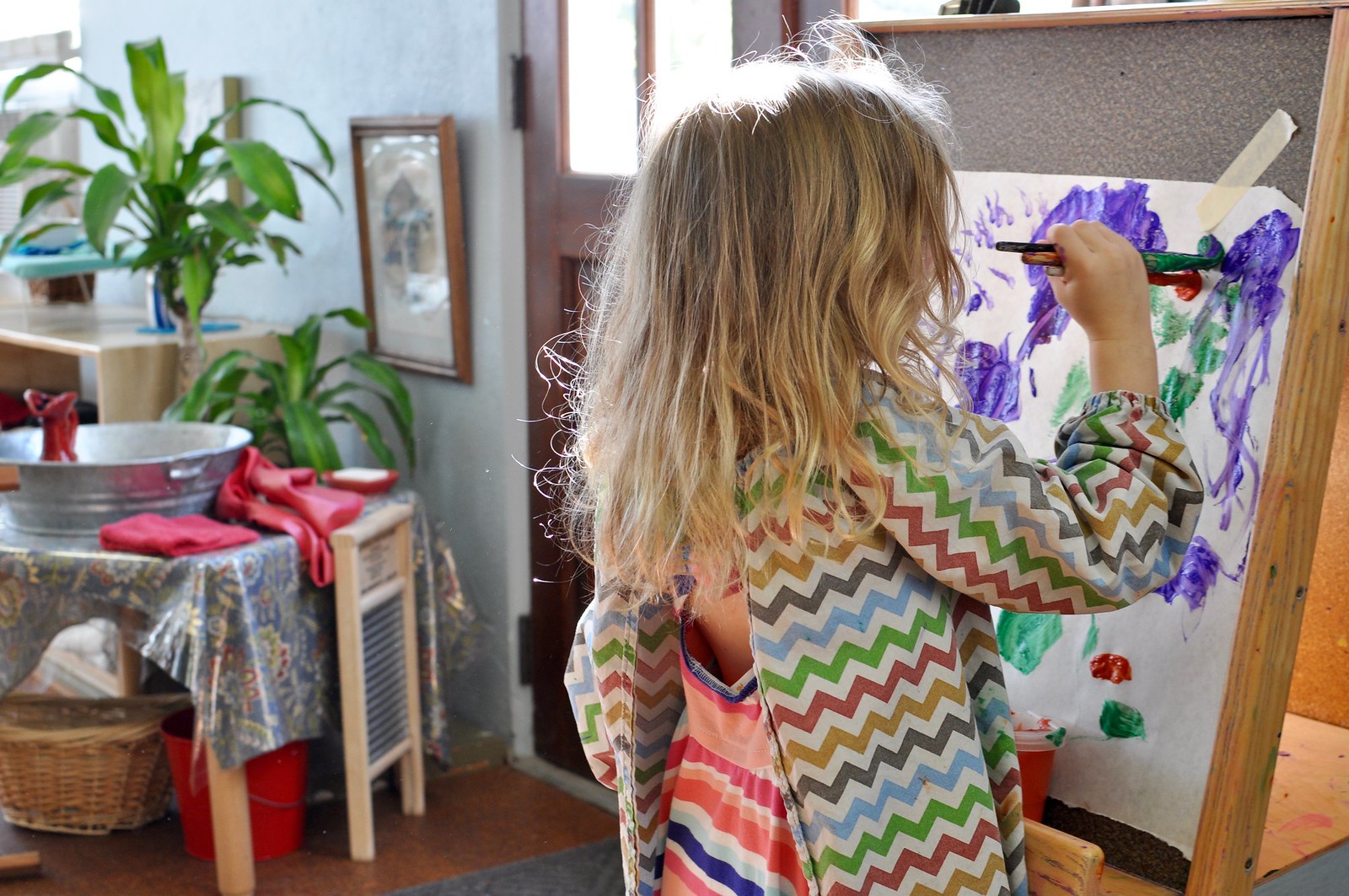 There is also plenty of creative energy involved in a child engaging in art. One child may choose to paint first thing in the morning as a way to ease into the day, while another may use the opportunity for self-expression to harness her creative energy for the day! Making art is a wonderful way for a young child to express feelings for which he may not yet have words.
There is also plenty of creative energy involved in a child engaging in art. One child may choose to paint first thing in the morning as a way to ease into the day, while another may use the opportunity for self-expression to harness her creative energy for the day! Making art is a wonderful way for a young child to express feelings for which he may not yet have words.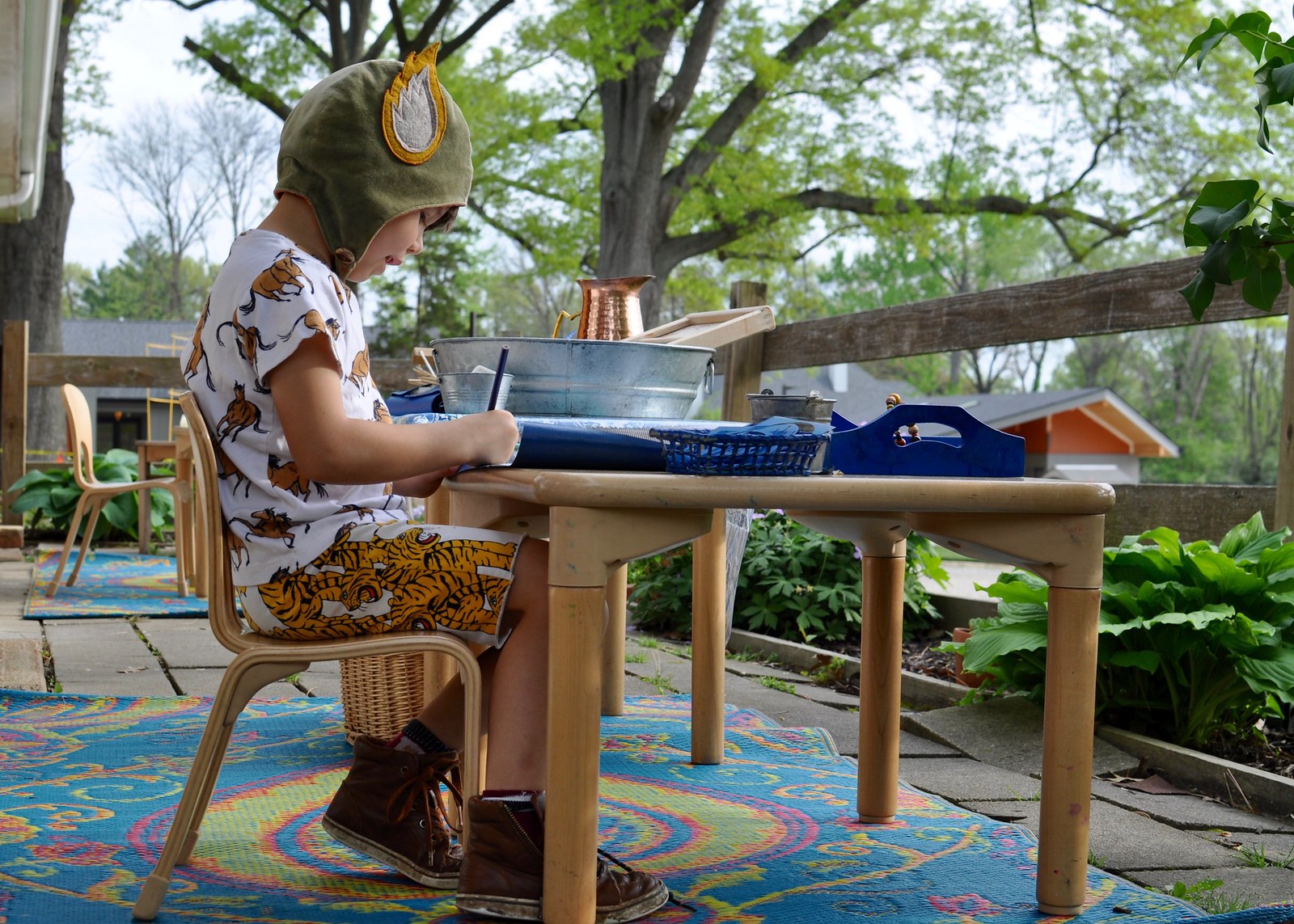
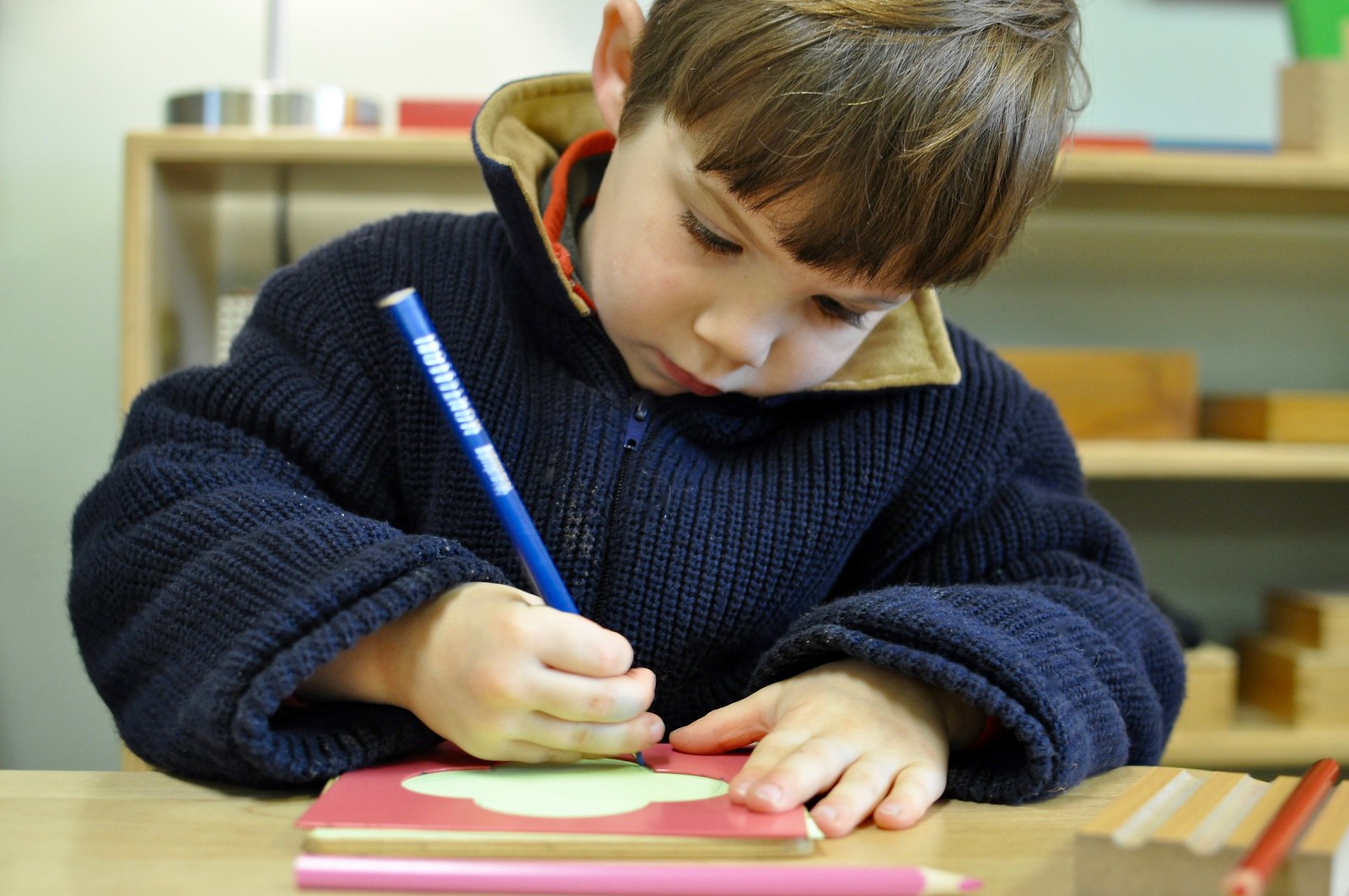
When using metal insets, children explore outline and color
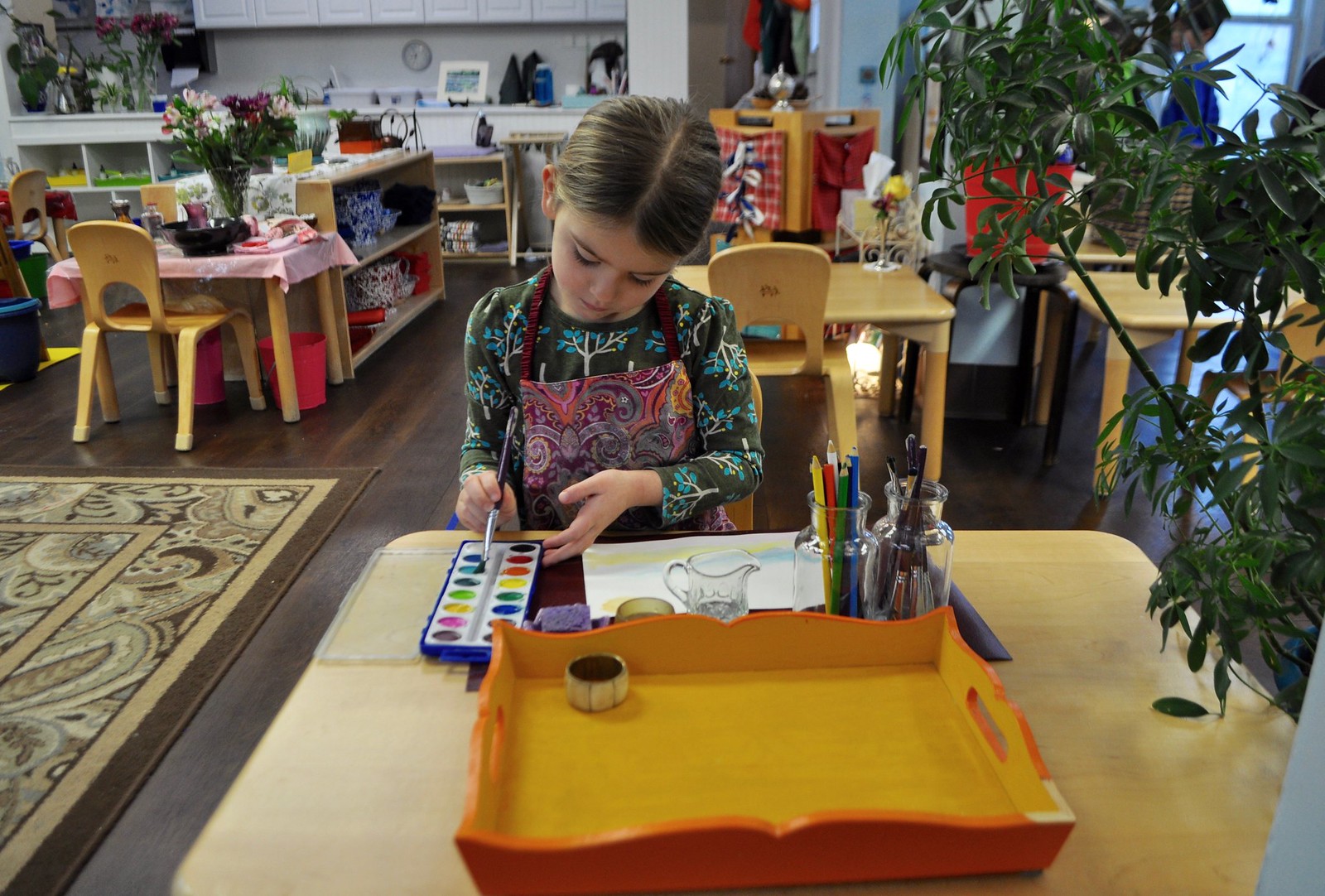 Once a child grows into the Lower Elementary environment, the role of artwork tends to shift. Though it is still an essential piece of self-expression, and still serves to direct coordination and concentration, the Lower Elementary child begins to care more about the product, creating art for the satisfaction of a final masterpiece.
Once a child grows into the Lower Elementary environment, the role of artwork tends to shift. Though it is still an essential piece of self-expression, and still serves to direct coordination and concentration, the Lower Elementary child begins to care more about the product, creating art for the satisfaction of a final masterpiece.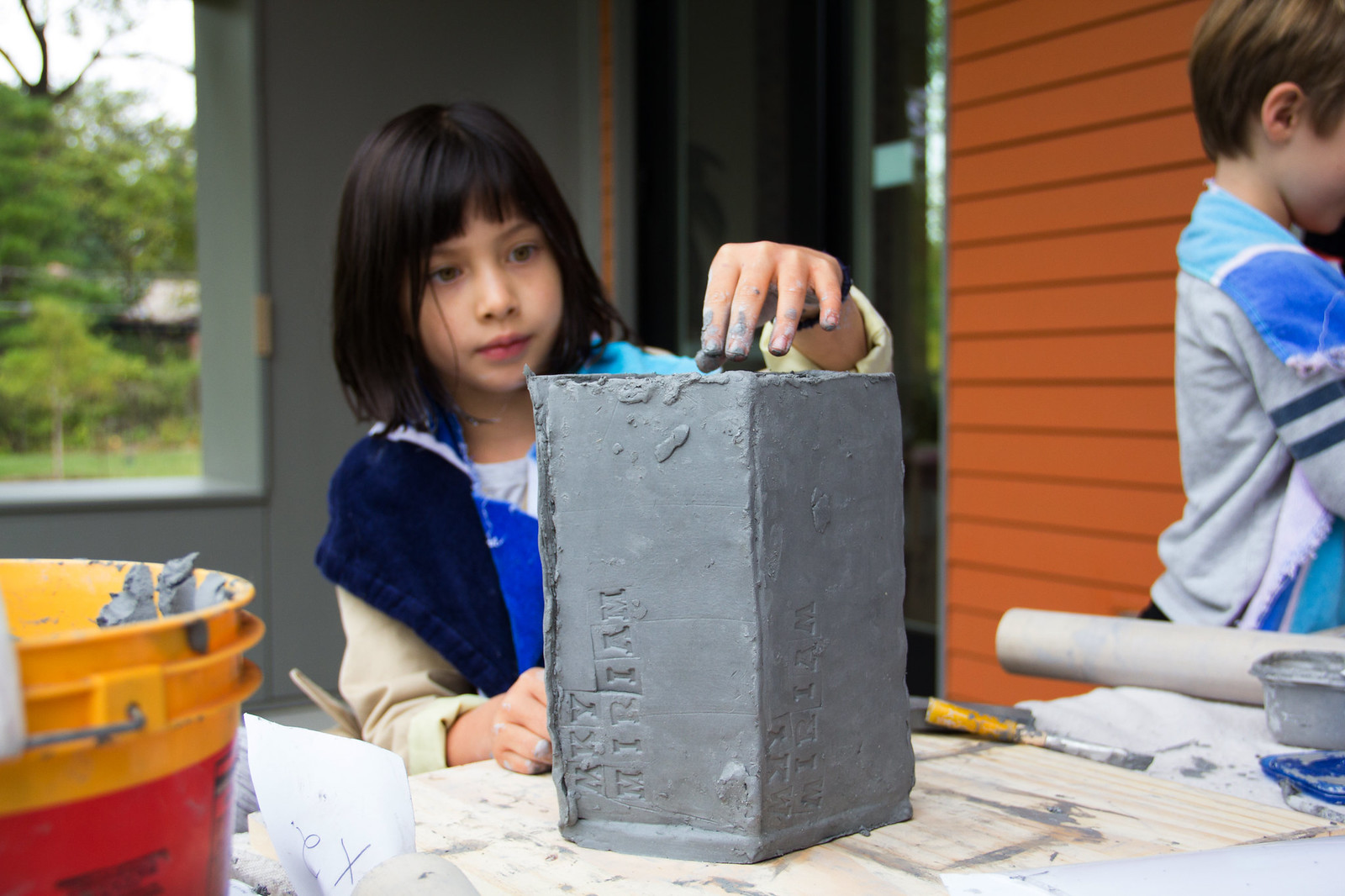 With this shift also comes the realization that art is a skill that requires practice and repetition, and that with practice comes improvement and immense satisfaction.
With this shift also comes the realization that art is a skill that requires practice and repetition, and that with practice comes improvement and immense satisfaction.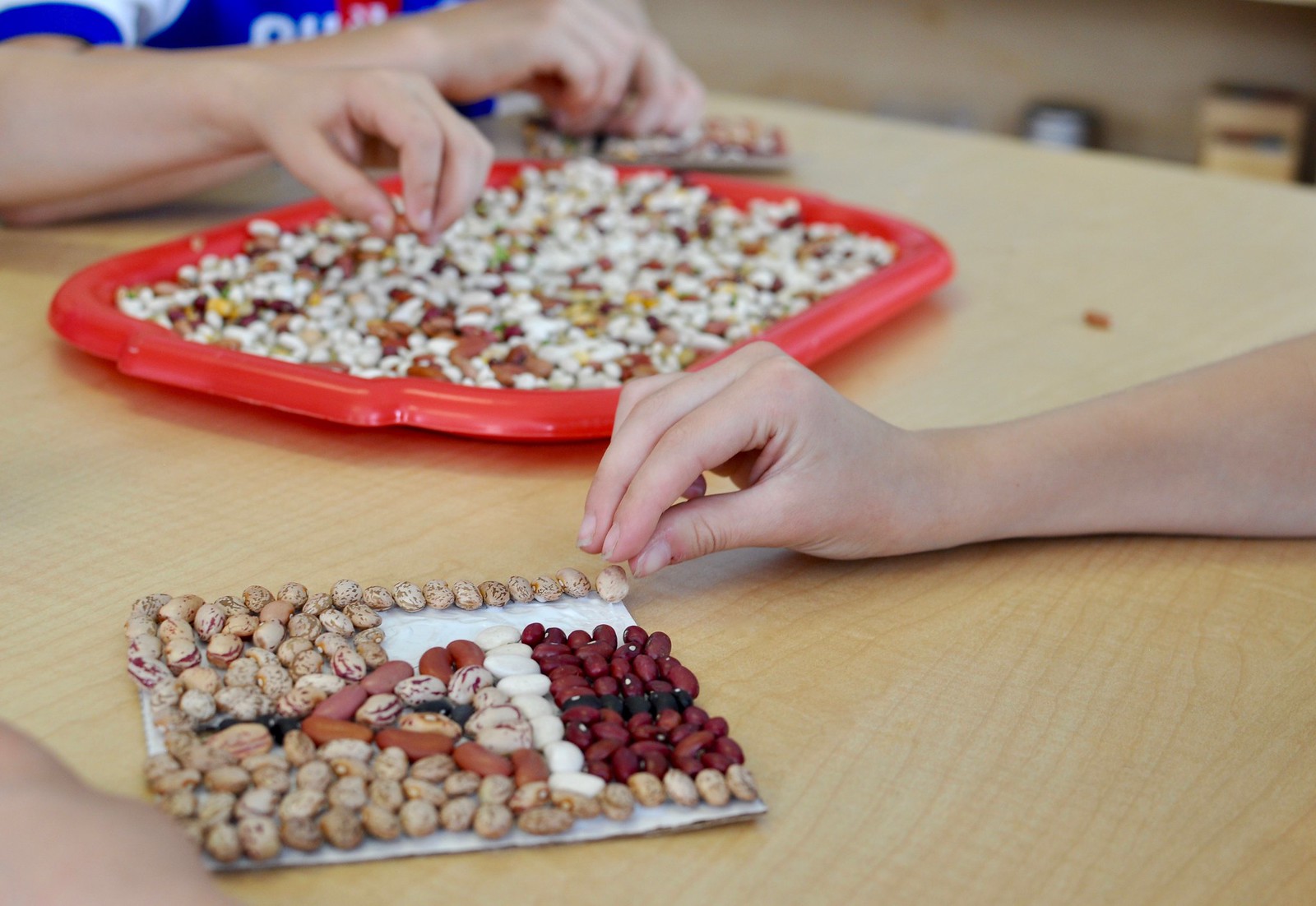
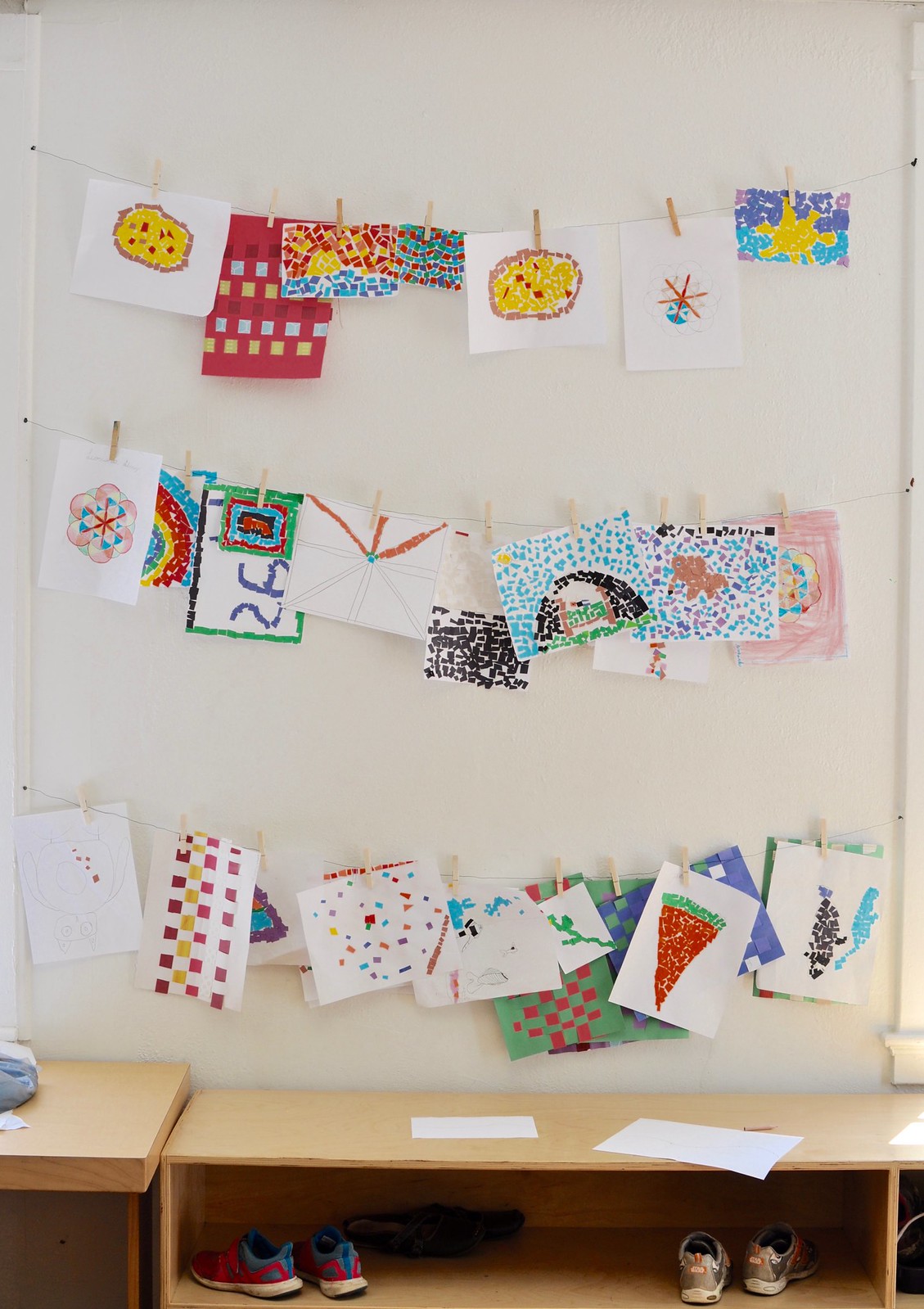
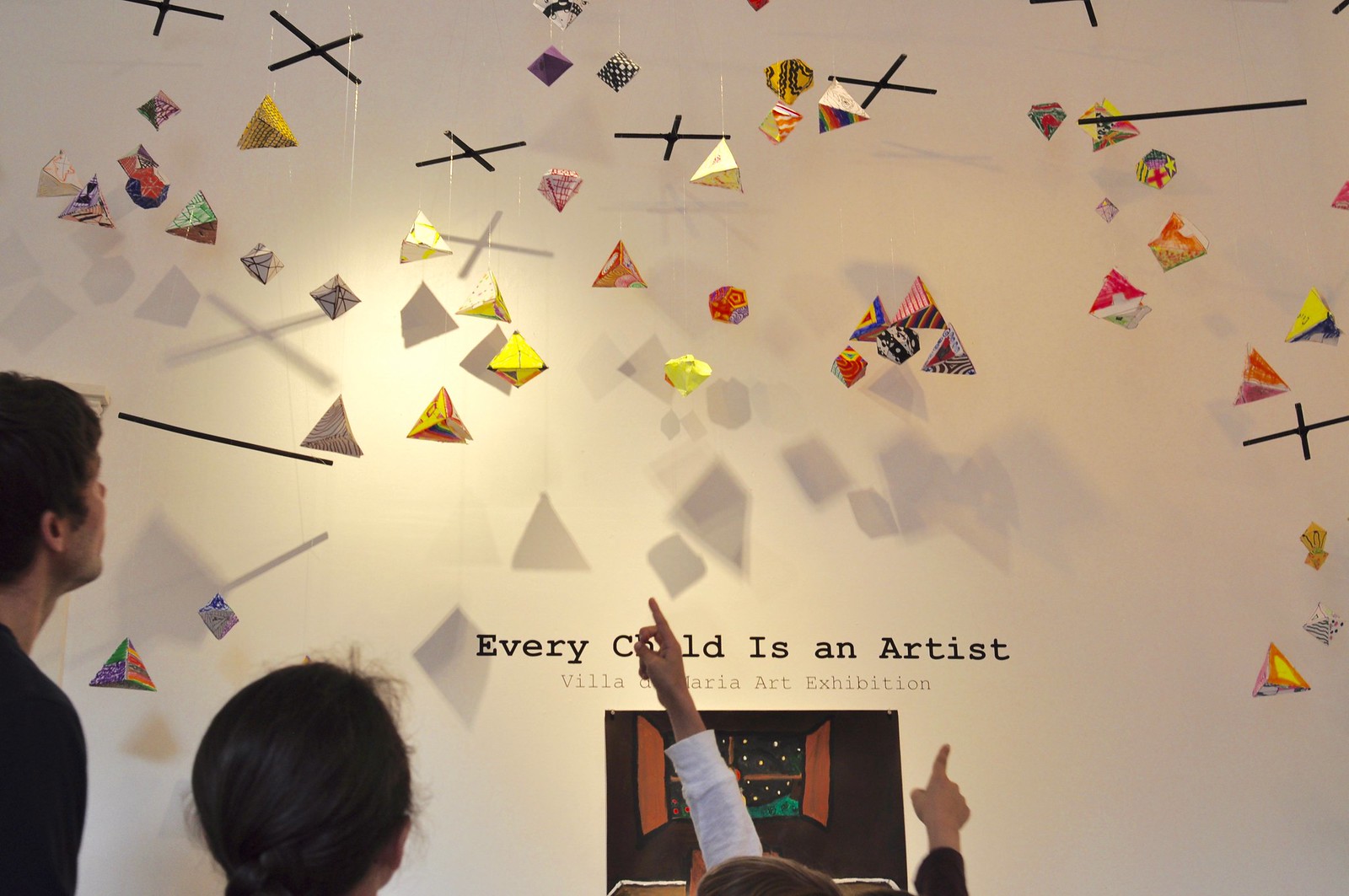
Lower Elementary children take pride in their finished works during last year's Every Child is an Artist art exhibit at Reese Gallery
The walls in the Upper Elementary classroom are full of art - both of their own creation, and of famous photographers and painters
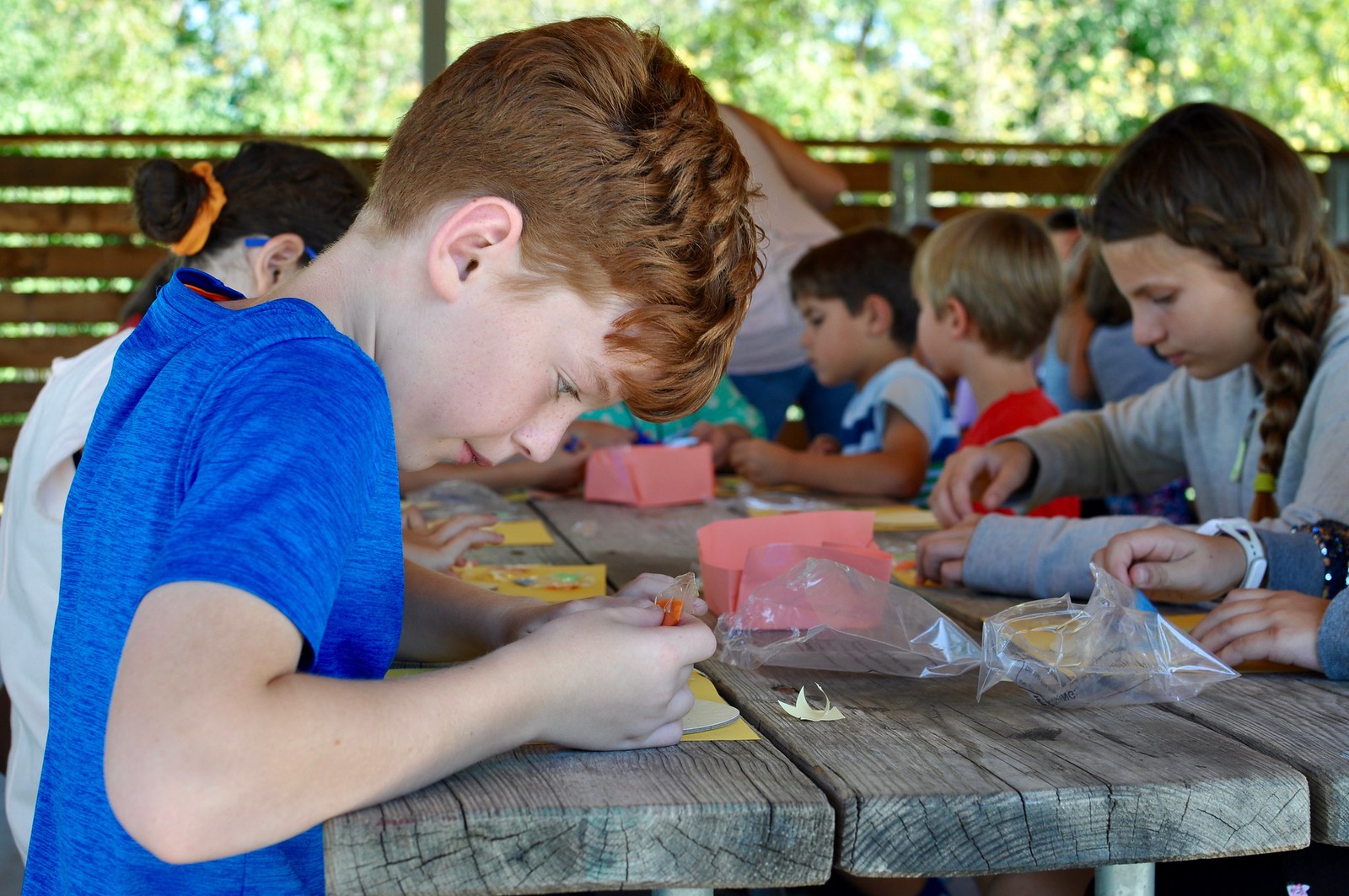 The Upper Elementary experience is a more intensive one, with art exploration and creation being more intentional, more intense, and more all-encompassing. In the Upper Elementary, art often intersects with history, culture, science, anatomy, race, class and other big issues. Upper El children learn to ask big questions and tie art with the broader world.
The Upper Elementary experience is a more intensive one, with art exploration and creation being more intentional, more intense, and more all-encompassing. In the Upper Elementary, art often intersects with history, culture, science, anatomy, race, class and other big issues. Upper El children learn to ask big questions and tie art with the broader world.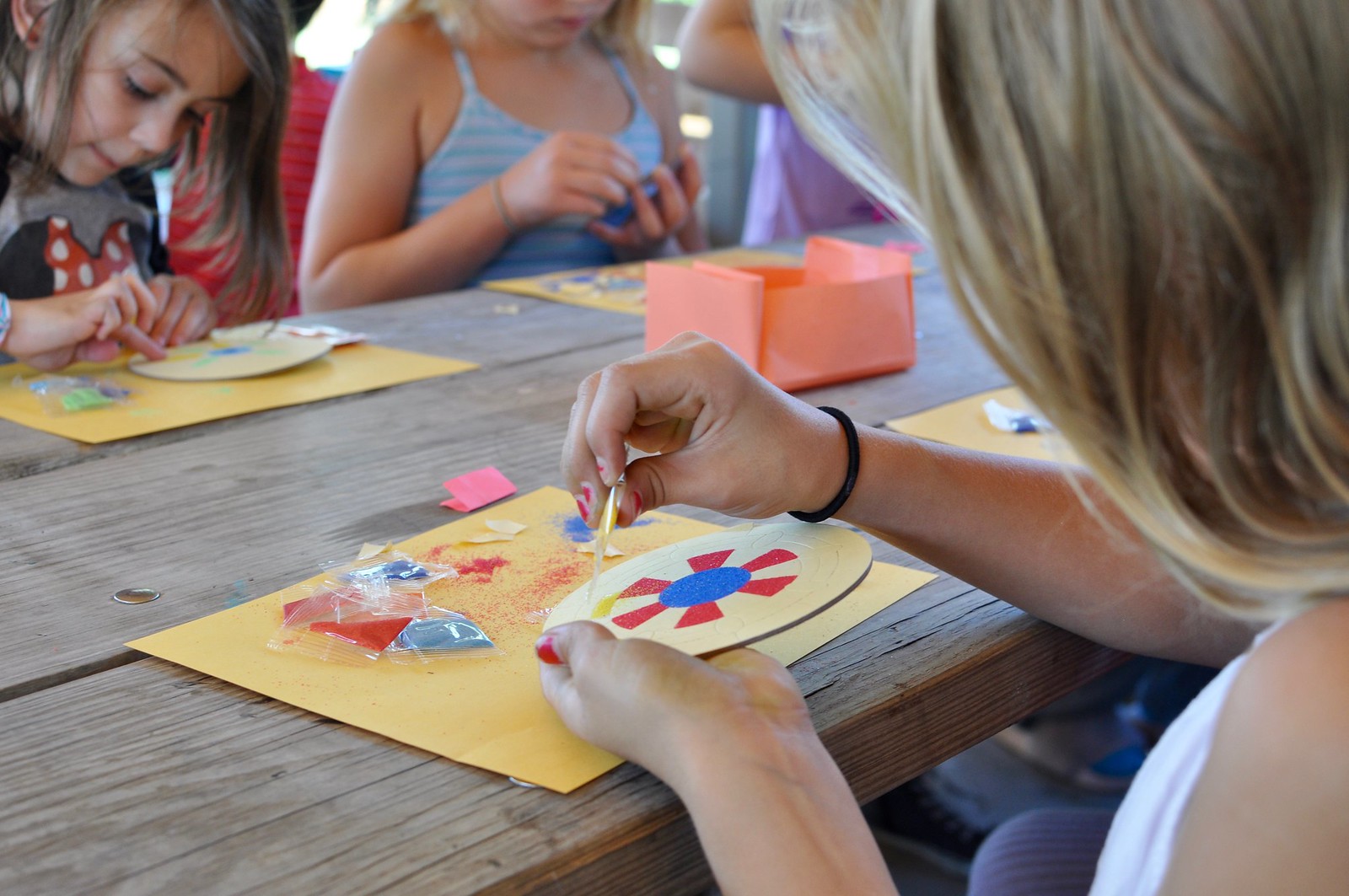
Lower and Upper Elementary children produce artwork during their cultural exploration and celebration of Diwali
Children experience a preview of South African artist Mohau Modisakeng's exhibit
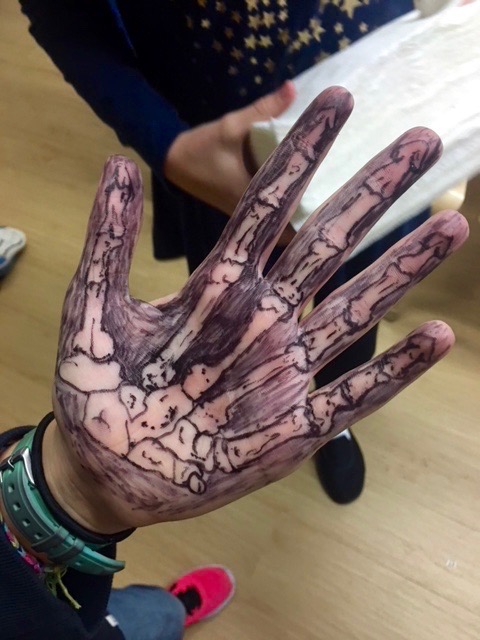 Upper Elementary Guide Rebecca Callendar shares the comprehensive role art plays in the Montessori classroom: "All subject areas are presented with equal importance and therefore are of equal value to the child. This allows the child to use art to explore math or math to explore art. Further, the material allows for deepened exploration across the years in school at Villa di Maria." Above, a child explores the anatomy of her own hand through some pretty impressive art produced with a simple ink pen!
Upper Elementary Guide Rebecca Callendar shares the comprehensive role art plays in the Montessori classroom: "All subject areas are presented with equal importance and therefore are of equal value to the child. This allows the child to use art to explore math or math to explore art. Further, the material allows for deepened exploration across the years in school at Villa di Maria." Above, a child explores the anatomy of her own hand through some pretty impressive art produced with a simple ink pen! 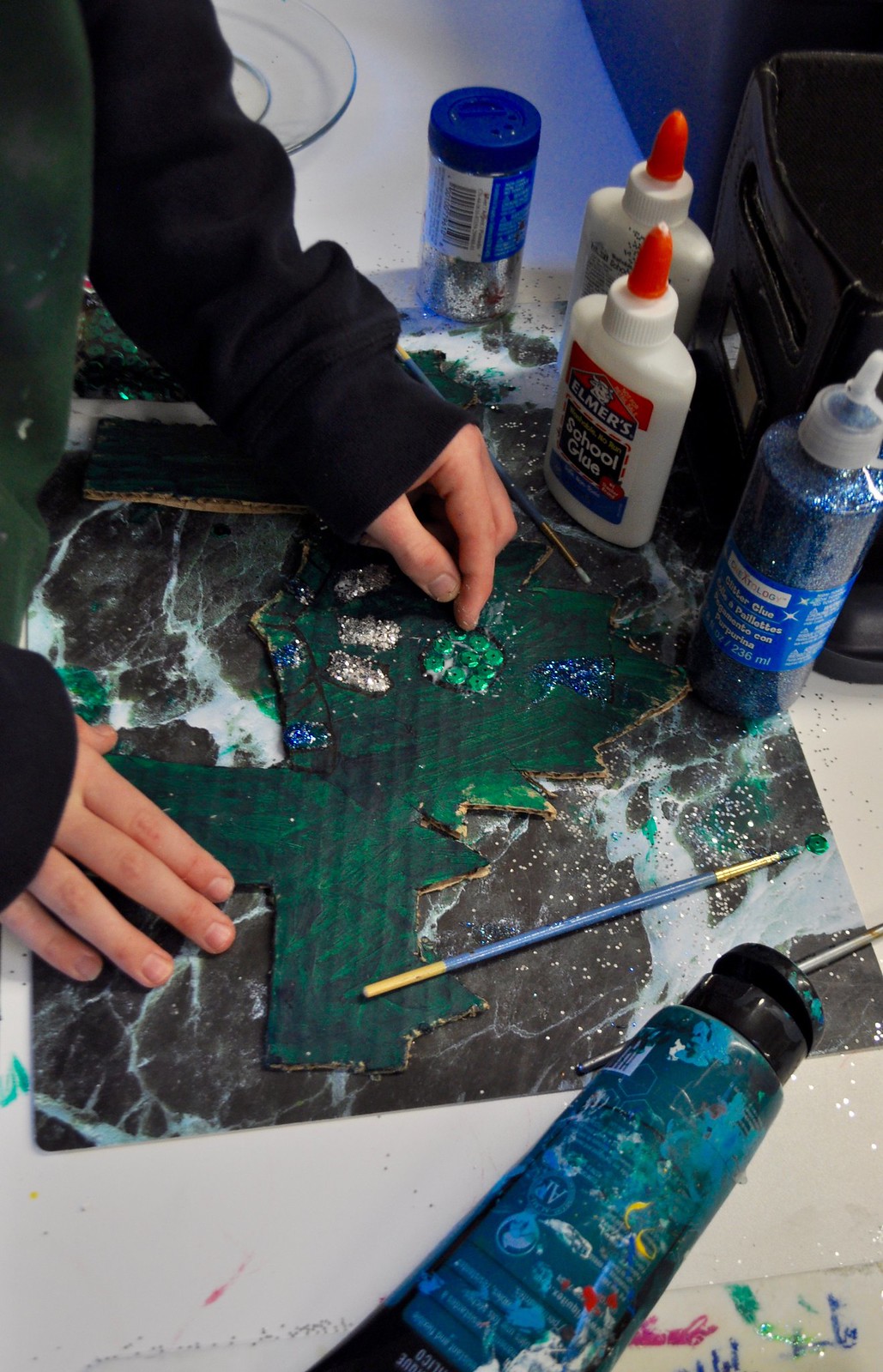 Upper Elementary artwork is also often a result of a broader need. Above, a child works on a costume piece for the winter concert. Below, children take photographs for last year's art exhibit.
Upper Elementary artwork is also often a result of a broader need. Above, a child works on a costume piece for the winter concert. Below, children take photographs for last year's art exhibit. Art plays a huge role in children's experience here at Villa di Maria. We are always excited to see what is around the corner!Further reading on Montessori art at Villa di Maria:Read more about creating a Montessori art space at home here. View the Upper Elementary's experience talking with South African artist Mohau Modisakeng about his exhibit here. Explore the benefits of handwork for children here.Clay work with local St. Louis artist Ruth Reese. A giant mandala on school grounds! Upper Elementary photo hike.
Art plays a huge role in children's experience here at Villa di Maria. We are always excited to see what is around the corner!Further reading on Montessori art at Villa di Maria:Read more about creating a Montessori art space at home here. View the Upper Elementary's experience talking with South African artist Mohau Modisakeng about his exhibit here. Explore the benefits of handwork for children here.Clay work with local St. Louis artist Ruth Reese. A giant mandala on school grounds! Upper Elementary photo hike.



